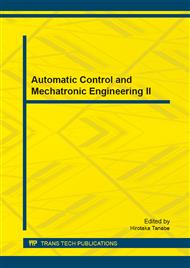p.702
p.708
p.712
p.716
p.722
p.726
p.730
p.734
p.741
Optimal Bidding Decision of Bidders in Homogeneous Goods Procurement
Abstract:
In this paper, a uniform price auction mechanism for procuring homogeneous divisible goods is studied, and both nonlinear bidding strategy and linear bidding strategy of symmetric bidders are analyzed. And then the dominant relationship is discussed deeply between the two kinds of equilibrium bids. The results show that the nonlinear equilibrium bidding strategy dominates linear ones. Based on this analysis, several suggestions are given on how to make optimal decision making on bidding strategy choice for bidders.
Info:
Periodical:
Pages:
726-729
Citation:
Online since:
September 2013
Authors:
Price:
Сopyright:
© 2013 Trans Tech Publications Ltd. All Rights Reserved
Share:
Citation:


